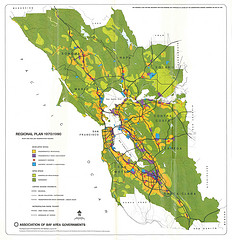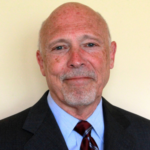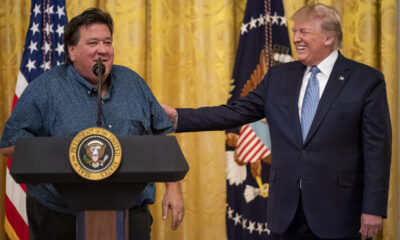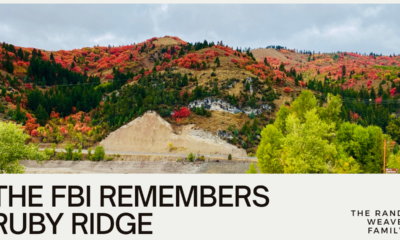Guest Columns
Planners: ten tricks they play

Here’s a test. Think of a regional sustainable development plan that does not include open spaces, compact living and reduced vehicle miles traveled. From Plan Bay Area in San Francisco, to New York’s Capital Region Sustainability Plan the programs are the same.
Most of the plan elements are requirements communities must advance in exchange for accepting federal grant money. HUD’s euphemistic “livability principles” are nothing more than forced centralized planning. Regionalism, with its unelected boards and autonomous planning authority, are the 21st century version of “collectivism.”
Ten devious tricks planners play

Association of Bay Area Governments Regional Plan, 1970-1990. Graphic: Eric Fischer, CC BY 2.0 Generic License
As community members see their choices are dwindling, planners resort to ever more deceptive practices. In creating a recent DVD on planning, I exposed several of the tricks planners use.
Controlling the vocabulary
Planners use marketing terms arrived at in group studies to move their audiences. Terms like resilient cities, healthy cities, sustainable and livable communities paint persuasive images.
Since most people want to be ‘healthy’ and ‘sustainable’, subconscious support is created for the plan with little understanding of the long-term consequences.
Rebranding
Other planners call their work, ‘placemaking’. This pleasant term is described as “creating livable physical environments supportive of: transit, walking, bicycling and social interaction…”
Sound familiar? “Placemaking” is simply repackaging of the same government required ‘livability principles’.
Controlling the process
J. Gary Lawrence, a Smart Growth advisor to Pres. Clinton, said, we must “change community decisions about what can or will be discussed and who has a right to be at the [planning] table.”
Andres Duany, one of America’s leading planners said in 2012:
We don’t need to have more public meetings… Just pass [our Florida Seven 50 Regional Plan] and trust us.
The industries’ top planners are on record saying, they want to decide what will be discussed, and who will be at the table. Community members are expected to “just trust” them.
Managing community behavior
One training organization that develops communications programs for groups including federal agencies and land trusts, recommends the following model to change community behavior.
- Define your target – in other words, who you want to do what
- Impress the target
- Track the people you have convinced
- Cultivate and nurture the relationship with the target
- And finally, ask your target to take the big step you’ve been after all along – the conservation easement, the major gift, etc.
Many planners use similar tactics. The problem is, most community members do not realize, they are being set up as targets.
Under-representation
While planners speak of community engagement, rarely do enough residents participate to justify implementing the sweeping changes of comprehensive plans.
Less than 350 people participated in South Carolina’s Greenville County comprehensive plan that will govern more than 450,000 people (.0008%).
In July of 2012, the NY Capital Region Sustainability Plan conducted three visioning meetings drawing a total of only 150 people from a region of over 1 million residents. (.0002%)
Planners steamrolled both plans forward, claiming overwhelming community approval.
Meeting control
[ezadsense midpost]
Facilitators often control community ‘visioning’ sessions to arrive at theplanner’s pre-determined outcome, rather than the community’s vision.
In one approach, facilitators praise responses that advance their plans, while marginalizing those that do not.
Tactics include ignoring critical questions and trivializing those who offer oppositional responses. If opposition persists, the attendees are dispersed into smaller groups to separate the dissenters.
Under-sampled surveys
Many surveys have such low participation rates they lack the sampling necessary for validity. But, that doesn’t stop planners from promoting the information.
One Capital Region Plan survey claims 76% of respondents want Green Infrastructure. But, of the 1 million residents affected by the plan, just 96 answered the survey question. (.0001%)
Skewed surveys
In another tactic, survey questions are worded in ways that promote only the responses the surveyor wants.
A 2010 planning survey for Carver, MA, asked residents, “Which of the following do you feel should be protected or acquired?” It then listed items including waterfront land, farmlands and more.
When respondents chose one of the items,it automatically constituted a vote in favor of public control of property. Residents were offered no option for rejecting public land control and were not informed of the long term consequences of ‘protecting or acquiring’ land.
Cherry picked surveys
In selling urban Smart Growth, NJ Planning commissioners quoted a 2011 National Association of Realtors study showing Americans favor “walkable, mixed-use, ―smart growth‖ neighborhoods.”
They did not reveal that the same study showed over twice as many people preferred suburban to city living, and chose single detached homes over the compact units used in Smart Growth.
Questionable claims
In promoting California’s SB 375, the state claimed: “Residences in auto-oriented suburban areas produce greater GHG emissions than higher-density areas.”
The statement is actually a misleading excerpt from the Transportation Research Board’s report, “Driving and the Built Environment”. California failed to mention the report’s own conclusion that researchers “lacked enough verifiable scientific evidence to support” their recommendations.
Verifiable evidence was available, however, from UK and Australian studies which each found GHG emissions were higher in the very compact living areas California is deceptively promoting.
Most planners do not set out to deceive people. The problem is, they cannot implement sustainable development, nor advance the government’s “livability principles” unless they re-engineer lifestyles, and foster plans that can infringe on property rights. People are beginning to realize that.
That is why sales tricks are necessary.
[ezadsense leadout]
John Anthony, Founder of Sustainable Freedom Lab, LLC, is a nationally acclaimed speaker, researcher and writer. He is a leading expert on globalist impacts on local affairs and the effects of federal agency regulations on local rule and property rights. Mr. Anthony’s Property Value Defense Network informs public officials and attorneys nationwide of the dangers of regulatory laws. His workshop, Shattering America’s Trance, teaches conservatives effective techniques for cross-political communications and is now available as an online course.
-

 Executive2 days ago
Executive2 days agoThe Last Supper: New York’s Socialist Feast
-

 Civilization3 days ago
Civilization3 days agoIvory Tower Thinking and Narcotics Boats
-

 Civilization2 days ago
Civilization2 days agoYoo Hoo, VP Vance—Your Character is Showing!
-

 Executive5 days ago
Executive5 days agoWaste of the Day: Shockingly, Inmate Phone Calls Lead to More Criminal Activity
-

 Executive3 days ago
Executive3 days agoWaste of the Day: Throwback Thursday – Funding Fat-Filled Butter
-

 Civilization2 days ago
Civilization2 days agoFacing Facts & Rolling Back Mythologies: The New National Security Strategy
-

 Executive4 days ago
Executive4 days agoWH Ignores Demands From Pro Life Lobby To Fire FDA Commissioner
-

 Civilization4 days ago
Civilization4 days agoGeneral Misconduct: There Is an ‘I’ in Milley















@Terry A. Hurlbut link to t.co